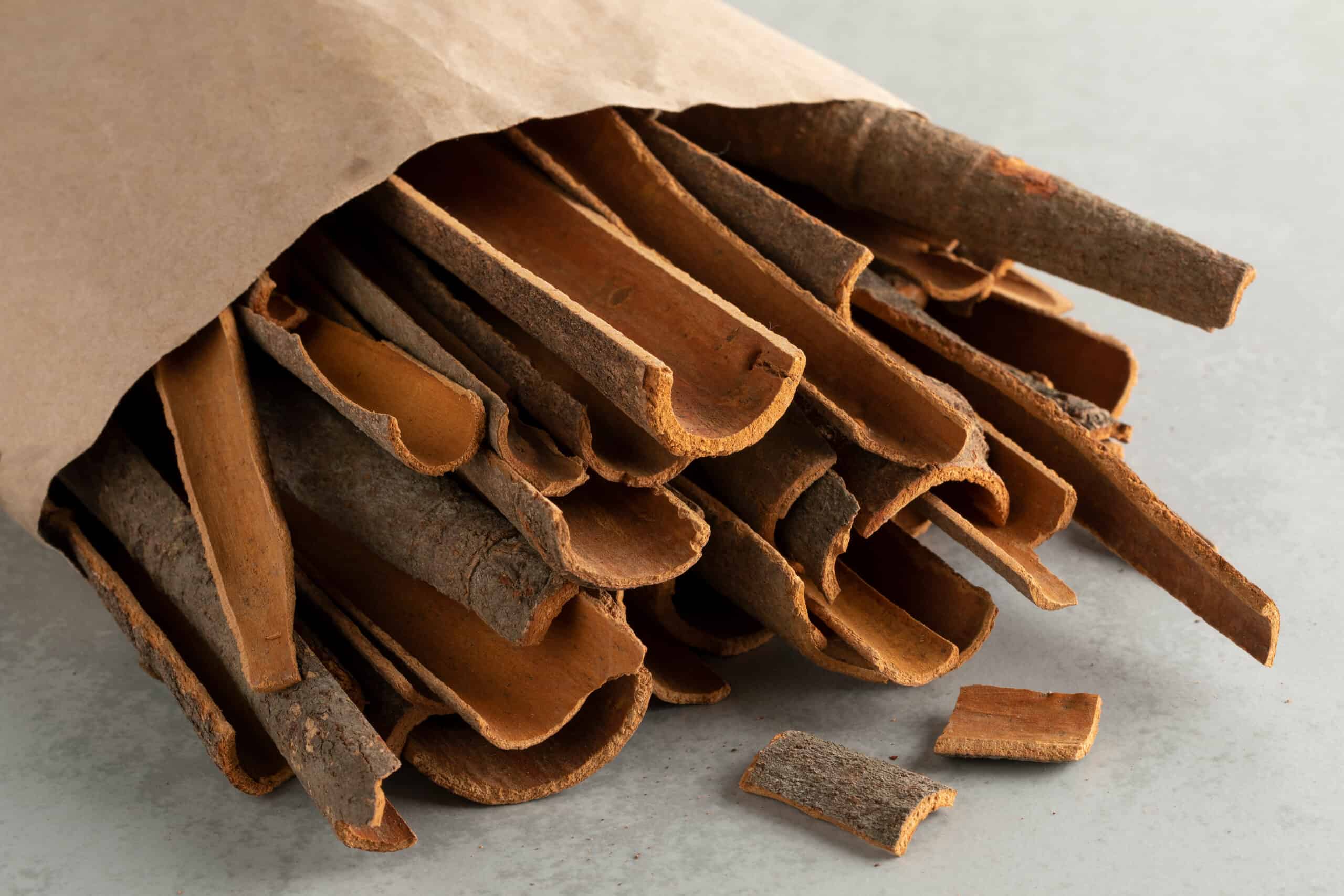When it comes to enhancing the flavor and aroma of our favorite dishes and beverages, cinnamon and cassia often play leading roles. These two spices, although closely related, have subtle yet significant differences particularly in taste, flavor, and appearance.
In this blog post, we’ll explore what sets cinnamon and cassia apart and help you understand when to use each in your culinary adventures.
Cinnamon vs. Cassia: A Side-by-Side Comparison
| Factor | Cinnamon | Cassia |
|---|---|---|
| Scientific Name | Cinnamomum verum or Cinnamomum zeylanicum | Cinnamomum cassia |
| Common Names | True Cinnamon, Ceylon Cinnamon | Chinese Cinnamon, Cassia Cinnamon |
| Flavor and Aroma | Sweet, delicate, and complex | Strong, spicy, and slightly bitter |
| Appearance | Thin, fragile, and light tan | Thick, hard, and reddish-brown |
| Texture | Easily crumbled into fine powder | Coarser, often in stick form |
| Coumarin Content | Low, safe for regular consumption | High, may be harmful in excess |
| Origin | Sri Lanka, India, and the Caribbean | China, Indonesia, and Vietnam |
| Preferred Culinary Uses | Desserts, baked goods, and beverages | Savory dishes, stews, and curries |
| Medicinal Applications | Anti-inflammatory and anti-diabetic properties | Traditional Chinese medicine |
| Cost | Usually more expensive | Generally more affordable |
Understanding the Differences Between Cinnamon And Cassia
- Flavor and Aroma: Cinnamon is prized for its sweet, delicate, and complex flavor profile, making it ideal for enhancing the taste of desserts, pastries, and hot beverages like chai. On the other hand, cassia boasts a robust, spicy, and slightly bitter taste, making it better suited for savory dishes and hearty stews.
- Appearance and Texture: Cinnamon sticks are thin and fragile, easily ground into a fine powder. Cassia, in contrast, has a coarser texture and often appears in thick, reddish-brown sticks.
- Coumarin Content: Cinnamon contains significantly less coumarin, a naturally occurring compound that can be harmful to the liver in large quantities, making it a safer choice for regular consumption.
- Origin: Cinnamon primarily hails from Sri Lanka, India, and the Caribbean, while cassia is commonly found in China, Indonesia, and Vietnam.
- Culinary Uses: Due to its sweeter and milder flavor, cinnamon shines in desserts, such as cinnamon rolls and apple pie. Cassia, with its stronger taste, is favored in savory dishes like Indian and Chinese cuisine.
- Medicinal Applications: Cinnamon is known for its anti-inflammatory and anti-diabetic properties and is often used in traditional medicine. Cassia has a history of use in Traditional Chinese Medicine for various health benefits.
- Cost: Cinnamon is usually more expensive due to its limited growing regions and delicate harvesting process. Cassia, being more widely available, tends to be more affordable.
Dishes Where Cinnamon Works Best
- Cinnamon Rolls: The sweet, warm flavor of cinnamon is a perfect match for the soft, doughy goodness of cinnamon rolls. It enhances the richness of the pastry and complements sweet glazes.
- Apple Pie: Cinnamon is a classic ingredient in apple pie. Its sweet and slightly spicy notes pair beautifully with the tartness of apples.
- Chai Tea: Cinnamon is a key component of chai tea, adding depth and warmth to the aromatic blend of spices.
- Oatmeal: Sprinkling cinnamon over a bowl of oatmeal creates a comforting and nutritious breakfast.
- Pumpkin Spice Latte: Cinnamon is a star ingredient in this beloved autumnal beverage, contributing to its cozy, seasonal flavor.
Dishes Where Cassia Shines
- Chinese Five Spice Powder: Cassia is a primary ingredient in this classic Chinese spice blend, lending its bold, spicy character to dishes like stir-fries and roasted meats.
- Spicy Curry: Cassia’s robust flavor complements the intense spices often found in Indian and Thai curries, adding depth to the dish.
- Savory Stews: Cassia is a great addition to hearty stews and braises, where its strong flavor can stand up to other robust ingredients.
- Hot and Sour Soup: This Chinese soup benefits from cassia’s spiciness, adding a warming element to the tangy broth.
- Sausages: Cassia can enhance the flavor profile of sausages and other processed meats, providing a distinct and spicy kick.
Remember that while both cinnamon and cassia can be used in various dishes, the choice between them should be based on your desired flavor profile. Cinnamon leans toward sweet and delicate, while cassia is bolder and more robust.
Adjust the quantity according to your taste preferences and the specific recipe requirements to achieve the desired outcome.
Final Thoughts
While cinnamon and cassia share similar names and appearances, their flavor profiles, culinary uses, and origins differ significantly. Understanding these distinctions allows you to select the right spice for your culinary creations, ensuring that every dish is seasoned to perfection.
Whether it’s the warmth of cinnamon in a comforting dessert or the robustness of cassia in a hearty stew, these spices have their unique places in the world of cooking.

